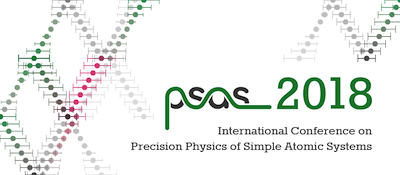Speaker
Description
The 1S-2S two-photon transition frequency in hydrogen can be measured most accurately compared to other transitions in hydrogen due to its narrow natural linewidth, and serves as a corner stone for fundamental constants. However, only a combination of the precisely known 1S-2S transition with additional measurements allows to extract specific constants such as the proton root mean square charge radius $r_\mathrm{p}$ as well as the Rydberg constant $R_\infty$, and to test the consistency of Quantum Electrodynamics. More precise measurements of the 2S-$n$P transition frequencies (e.g. with $n=4, \, 6$) can be used to overcome current limitations in the framework of determining fundamental constants.
The value of $r_\mathrm{p}$ has become particularly interesting since the discovery of the apparent discrepancy with muonic hydrogen. Important steps towards the solution of this so-called “proton radius puzzle” are more precise measurements of other transitions in hydrogen. Recently, the 2S-4P transition has been measured in our group with a relative uncertainty of 4 parts in $10^{12}$. Combining this result with the 1S-2S transition frequency leads to the $r_p$ value which is 3.3
combined standard deviations smaller than the value deduced from previous hydrogen world data, but in good
agreement with the value from muonic hydrogen. Since the origin of this discrepancy is currently unknown, more measurements with even higher precision are needed.
Using the same apparatus as for the 2S-4P data, we aim to measure the 2S-6P transition with an improved uncertainty. With a narrower natural linewidth of 3.8 MHz (as opposed to 12.9 MHz for 2S-4P), the 2S-6P transition has the potential to determine the line center more accurately. In addition to the known challenges from the previous experiment, the new transition requires to rebuild the system for 410 nm (2S-6P) as opposed to 486 nm (2S-4P) laser light. The shorter wavelength leads to difficulties such as a complete re-design of our collimator used for the active fiber-based retroreflector, and increased Rayleigh scattering in the optical fiber resulting in etalon-like effects. This poster reports on the current status of the 2S-6P hydrogen experiment, with a particular focus on the upgrade for shorter wavelength.
| print service | no, I'll bring my poster to the conference |
|---|

